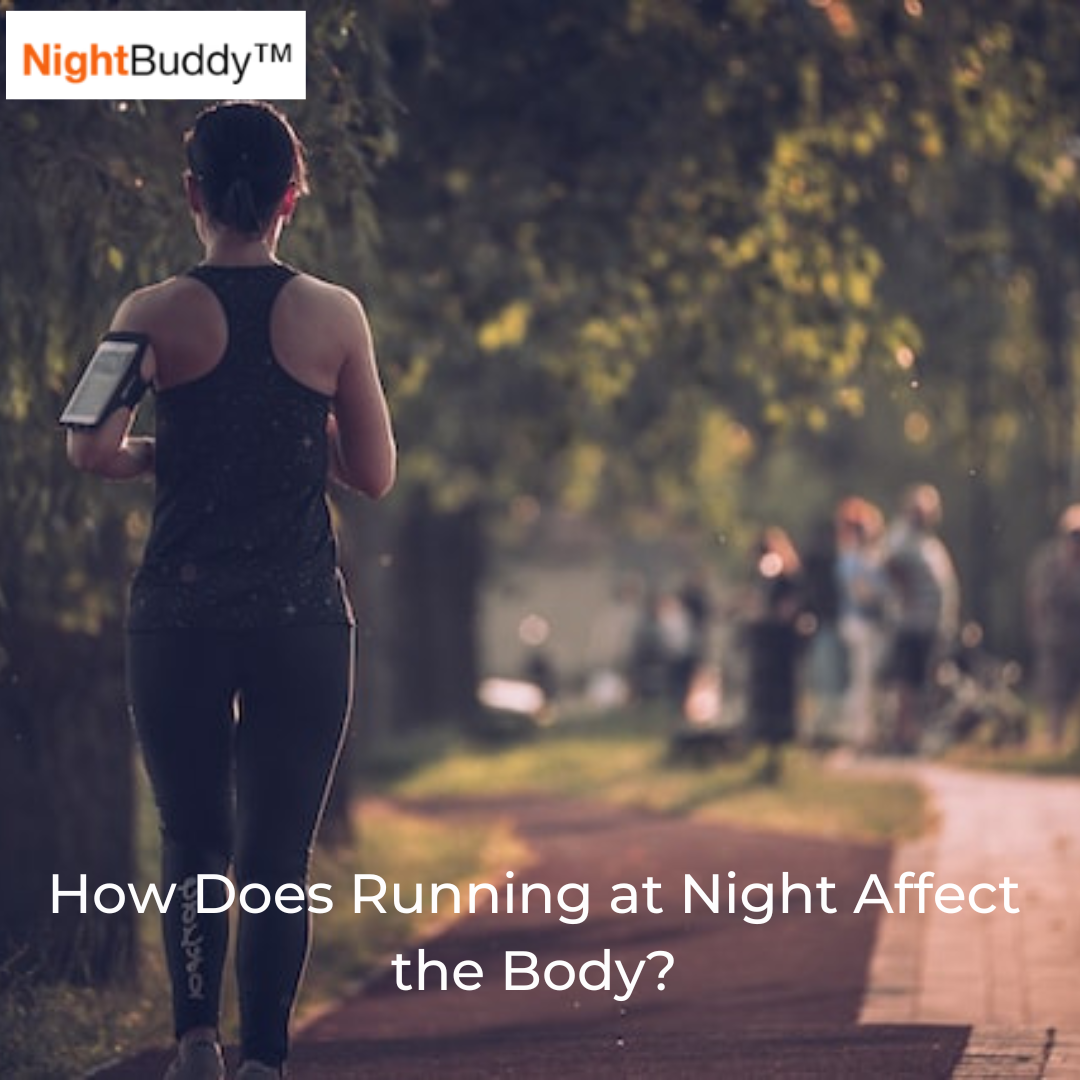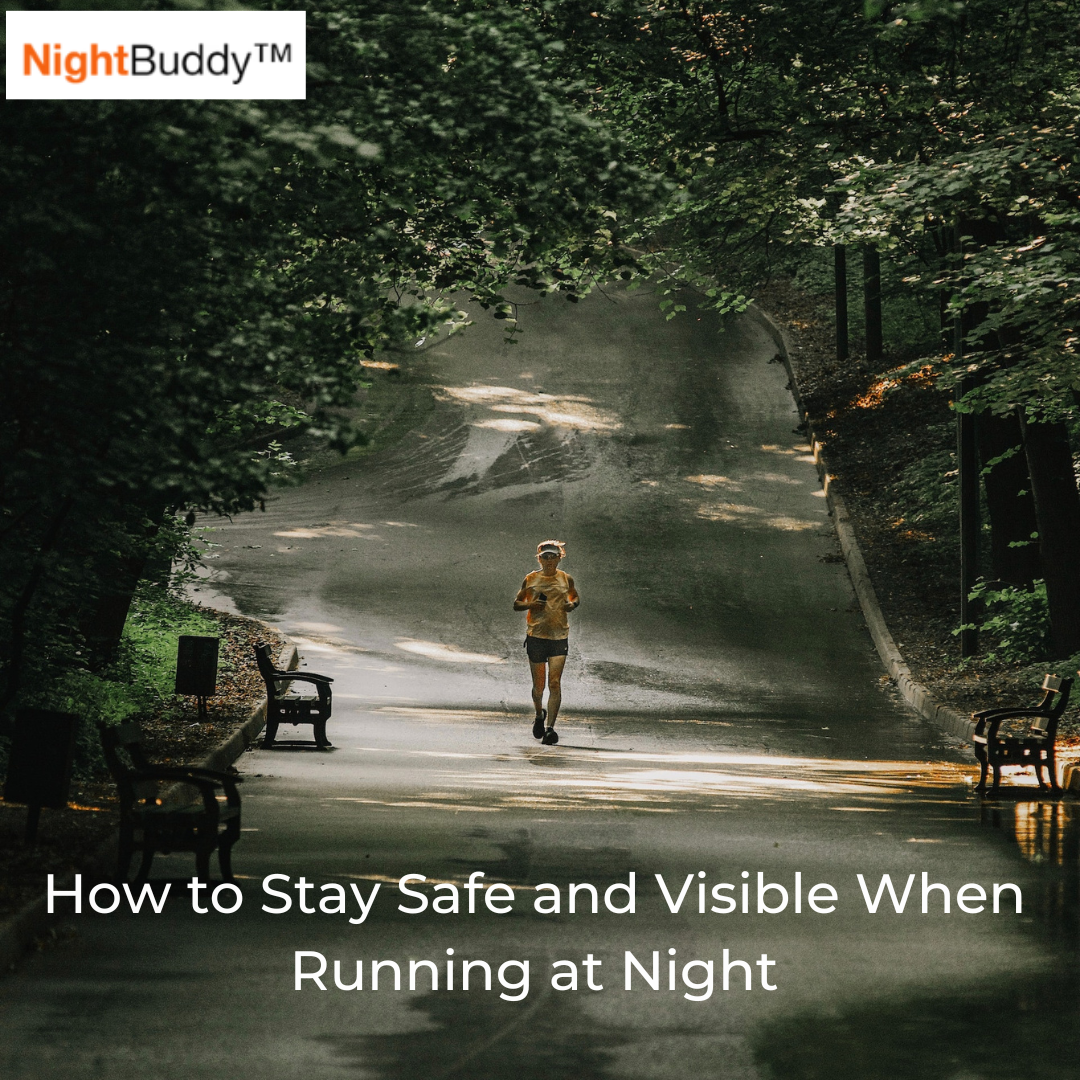Running at night can give you a deeper and more relaxing sleep. You fall and stay asleep easily because your gets tired after running.
Besides this, nighttime running can help balance blood pressure and improve mental health.
Let's explore more benefits of night runs over morning runs. You'll also find safety tips for night runners.
Stay tuned:
What night runs do to your body?
Many people prefer running at night, either because of their busy schedule or it's cooler and more peaceful at night.
But running at night can also have some effects on the body that may be different from morning runs. Here's what night run does to your body:
Better Sleep
We know that physical activity in evening can help improve sleep quality. But running a few hours before bed can have an even greater impact on sleep efficiency.
When you run at night, your body produces more melatonin. Melatonin regulates your sleep-wake cycle. That's how it can increase your chances of having quality sleep and sustaining your body clock.
Lower Blood Pressure
Nighttime runs may help lower blood pressure which is good for blood vessels.
A study published in the journal "Chronobiology International" found that participants who did their regular exercise in the evening had lower blood pressure compared to morning persons.
Lower blood pressure also means a better heart health.
Better Mental Health
Running at night can be good for your mental health because it provides a sense of calm and solitude. This further allows for reflection and introspection that is beneficial for mental health.
Cooler Temperatures
When the sun goes down, the temperature drops. So, your body doesn't have to work as hard to maintain its core body temperature.
Results? Improve performance and reduced the risk of heat exhaustion.
Does Running at Night Improves Sleep Quality?

Yes, it does.
Night running can affect sleep patterns for some people. While exercise in general can improve sleep quality, your workout timing can impact your ability to get better quality of sleep for prolonged hours.
Please note that the effects of night runs may vary from person to person. Runners report that running at night helps them sleep better. They can release any pent-up energy from the day and feel more relaxed. As a result, they fall into deep relaxing sleep less than an hour after their workout.
Does running at night affect your sleep habits? Here are some things you can do.
Try to finish your run early and avoid any vigorous activity at least 2-3 hours before sleep time. So, your body will get enough time to cool down and relax after vigorous exercise.
Also, do some stretching and calming activities, like reading or meditation before retiring to bed.
Just listen to your body and monitor your energy levels to determine what works best for you. If you experience the beneficial effects of running at night, keep it up!
Most Important Safety Tips for Night Runs
Wear Reflective Clothing
When running at night, make sure you're visible to others on the road or trail.
Reflective clothing can help with this by reflecting light back to its source. So, you can be easily seen from a distance, especially for drivers.
Related: How to stay safe and visible when running at night
Use Lighting
Runners lighting is a must-have tool for late night runs. Headtorches for runners, handheld flashlights, and clip-on lights - all can help you see what's ahead. So, you'll be able to avoid hitting obstacles on your path.
Choose a light that is bright enough to light your way. But it should not be so bright that it blinds other night runners, pedestrians, or drivers.
A good headlamp is a night owl's best friend. Night Buddy offers quality light accessories for you!
Stick to Familiar Routes
During night runs, it's easy to get disoriented and lost. So, stick to routes you know well to avoid getting lost or finding yourself in unsafe areas.
Also, familiar routes allow you to sense potential hazards, like uneven terrain or poor lighting.
Run With a Partner
Running with a partner is a good way to stay safe on a nighttime run.
Not only can you keep each other motivated, but you'll also be more visible to others on the road or trail.
Running in pairs or groups can also deter potential attackers or predators, making it safer overall.
Stay Alert
During late night runs, you must stay alert and focused. Keep an eye for potential risks, like potholes, curbs, or low-hanging objects.
Be aware of your surroundings and stay vigilant to anything that seems out of the ordinary.
Also, avoid wearing headphones at a high volume, as it can limit your ability to hear potential danger.
Check the Weather
Before setting your nighttime training plans, check the weather forecast.
If it's going to be raining, snowing, or foggy, the visibility will be even lower than usual. Consider postponing your run or choosing a well-lit route with good visibility.
Why You Need a Headlamp for Nighttime Running

Since nighttime is devoid of natural light a headlamp is an essential accessory for running at night. Here are some benefits of using a headlamp for your nighttime runs:





Leave a comment
This site is protected by hCaptcha and the hCaptcha Privacy Policy and Terms of Service apply.